Looking for a floor design that adds instant grace without feeling outdated or too trendy for your home? A herringbone floor pattern delivers classic style with its distinctive zigzag layout that catches every eye walking through.
This classic pattern changes plain floors into statement features that upgrade your entire home’s appearance and value. You see herringbone in luxury hotels, historic buildings, and designer homes because it works beautifully everywhere it goes.
Installing a herringbone floor pattern might seem complicated, but understanding the basics makes the process much clearer. I’ll walk you through everything about this pattern so you can decide if it perfectly suits your space.
What is a Herringbone Floor Pattern?
A herringbone floor pattern uses rectangular planks arranged in a distinctive zigzag design that creates visual movement. Each plank sits at an angle, forming a V-shape that repeats across your entire floor surface.
This classic pattern has deep historical roots in European architecture and traditional parquet flooring designs. You’ll find it in old palaces, mansions, and homes throughout France, Italy, and England, dating back centuries.
The herringbone pattern looks completely different from standard straight or diagonal floor layouts you commonly see today.
Instead of planks running in one direction, they alternate angles to create an eye-catching woven appearance.
How a Herringbone Pattern Is Laid?
Installing a herringbone pattern requires careful planning and precise measurements before you place any planks down. Each rectangular piece sits at an exact angle, meeting the next plank to form a distinct V-shape.
You can choose between a straight installation that runs parallel to your walls or a diagonal placement for added drama.
Diagonal layouts create more visual interest but require more cutting and waste during the installation process overall.
Proper subfloor preparation makes all the difference in how your finished herringbone floor looks and performs long-term. The surface must be completely level, clean, and dry before you begin laying any planks down.
You’ll need specific tools, including a miter saw, measuring tape, and spacers, for achieving perfect alignment throughout.
Types of Herringbone Floor Patterns
I’ve gathered the most popular herringbone variations so you can find the perfect style for your space. Each pattern offers a unique look while maintaining that classic zigzag appeal everyone loves. Here are the main types to choose from:
1. Classic Herringbone
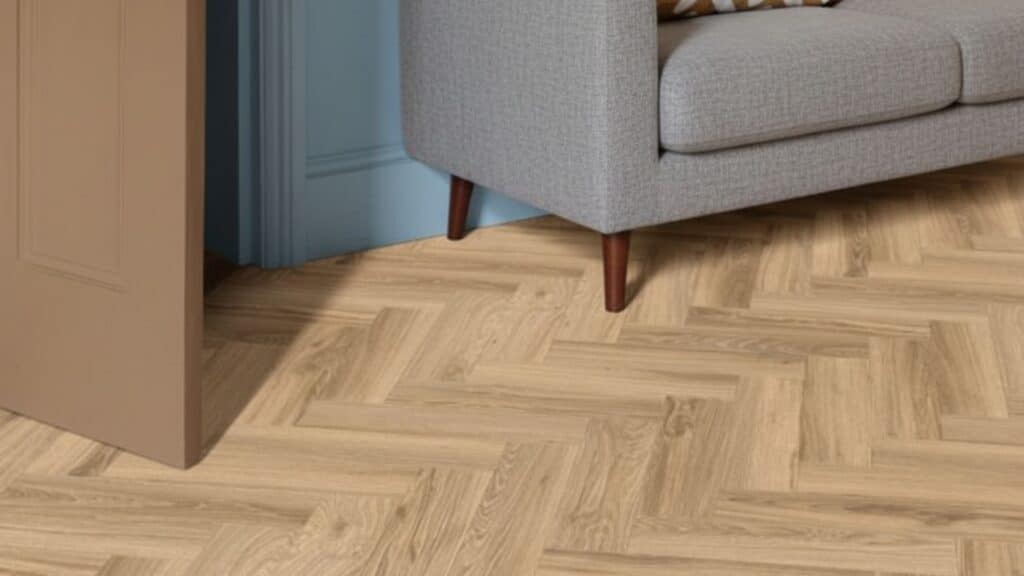
This traditional pattern lays rectangular planks in a zigzag V-shape with ends meeting the sides of adjacent planks. It’s classy and works beautifully in any room style or decor scheme you choose.
The classic design adds natural movement and flow to your floors without feeling too busy or overwhelming. This pattern remains the most popular choice for homeowners wanting luxury floors that never go out of style.
2. Double Herringbone
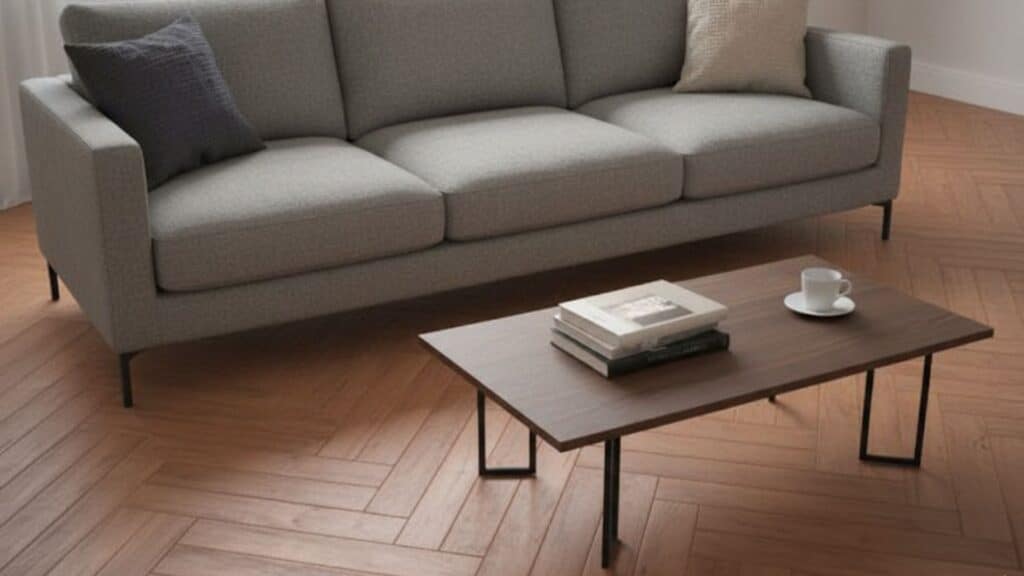
Two planks are placed side by side in each V-shape, making a wider and more textured design overall. It adds extra depth and visual interest to your floors compared to the single plank version.
This pattern works especially well in larger rooms where the doubled effect creates more impact and presence. The wider design makes your space feel grander and more luxurious without changing the basic herringbone concept.
3. Block Basket Weave (Mosaic)
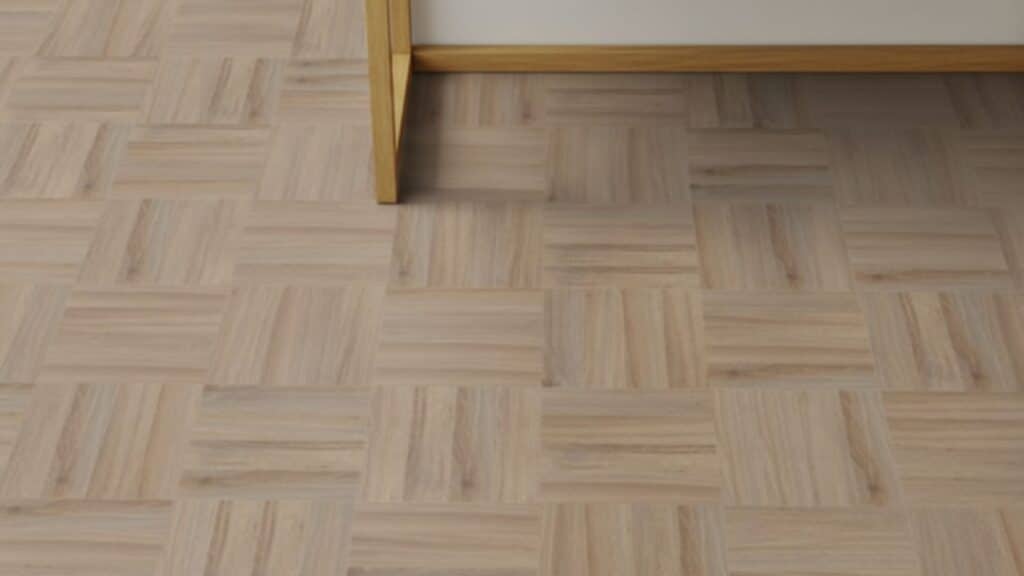
Planks are laid in small blocks, creating a boxed or mosaic appearance that catches the eye immediately. It’s more intricate and detailed than standard herringbone, giving floors a formal and urbane style.
This pattern requires more precision during installation but delivers incredible results that impress guests and visitors. The geometric blocks create interesting shadows and dimensions that change throughout the day with natural light.
4. Straight Lay Herringbone (Brick Bond)
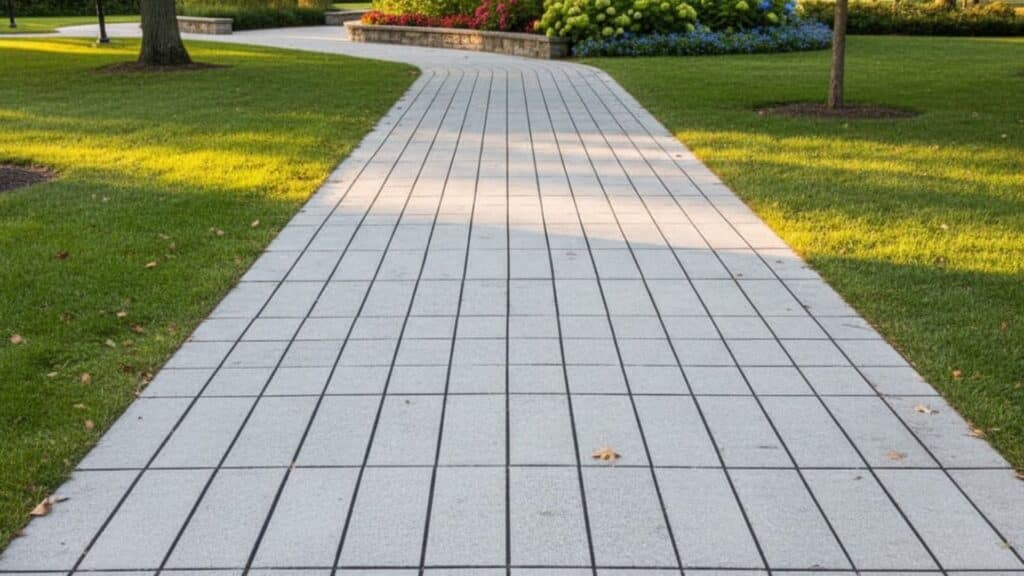
Planks lie side by side in straight rows, resembling traditional brickwork patterns you see on walls. It gives a sleek and modern update to classic herringbone while maintaining that structured appearance.
This simplified version is easier to install than angled herringbone patterns and uses less material waste. The clean lines work perfectly in contemporary homes that favor minimalist design and straightforward aesthetics.
5. Ladder Herringbone
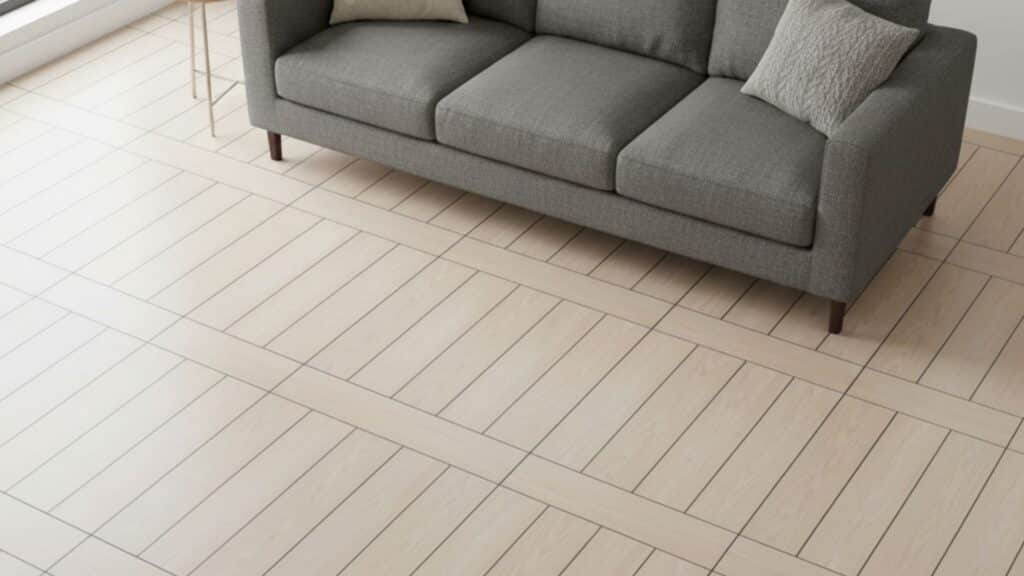
Grouped vertical planks are interrupted by horizontal rung planks, resembling a ladder leaning against a wall. This bolder style adds instant visual magnetism and drama to any space you install it in.
The pattern creates strong horizontal and vertical lines that draw eyes across the entire room naturally. It’s perfect for making a statement in entryways, hallways, or feature walls where you want attention.
6. Diagonal Herringbone
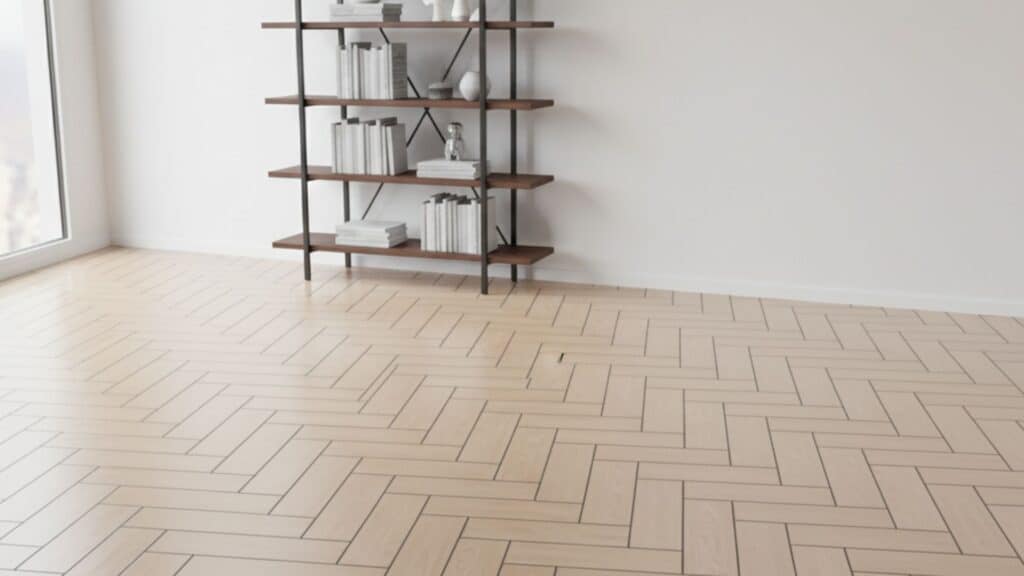
Traditional herringbone set diagonally to the room edges instead of running parallel to the walls like usual. It creates a dynamic and dramatic visual effect that makes rooms feel larger and more interesting.
The diagonal orientation adds energy and movement that standard straight herringbone installations cannot quite achieve alone. This layout works beautifully in square rooms where you want to break up the predictable geometry.
Herringbone vs Chevron Flooring
Both patterns look similar at first glance, but their installation and effect differ. Understanding these key differences helps you choose the right pattern for your home and budget:
| Feature | Herringbone | Chevron |
|---|---|---|
| Plank Shape | Rectangular planks with straight ends | Planks cut at precise angles on both ends |
| Pattern Type | Overlapping zigzag with staggered joints | Continuous V-shape with pointed meeting points |
| Visual Feel | Traditional, textured, and classic appearance | Sleek, modern, and streamlined look |
| Installation Difficulty | Easier to install with less precision required | Requires more precise cutting and measurements |
| Material Waste | Less waste due to rectangular cuts | More waste from angled cuts on planks |
| Repair Process | Easier to replace individual planks | More difficult to repair without disrupting the pattern |
| Cost | Moderate pricing for materials and labor | Slightly higher due to cutting and installation time |
While chevron is technically a variation of herringbone, it creates a distinctly different visual effect. Choose classic herringbone for traditional appeal or chevron for a sleeker, more contemporary finish in your space.
Best Materials for Herringbone Flooring
Choosing the right material for your herringbone floor affects both appearance and durability over time. Different materials work better in specific rooms and climates, depending on your needs and budget. Here are the top options to consider:
- Solid hardwood: Oak, walnut, and hickory offer natural beauty and can be refinished multiple times throughout their lifespan.
- Engineered wood: This layered construction handles moisture better than solid wood and works great in basements or humid climates.
- Luxury vinyl and laminate: These affordable materials mimic real wood appearance while being waterproof and easy to maintain for busy households.
- Tile and stone: Ceramic, porcelain, or natural stone herringbone patterns add grace to wet areas where wood would be damaged.
Each material offers unique advantages depending on where you install it and how much you want to spend. Match your material choice to your room’s function, moisture levels, and the overall look you want to achieve.
Room-by-Room Styling Ideas
Herringbone floors work beautifully in every room but require different design approaches depending on the space’s function. I’ll show you how to style and design herringbone flooring to match each room’s unique needs perfectly.
1. Living Room
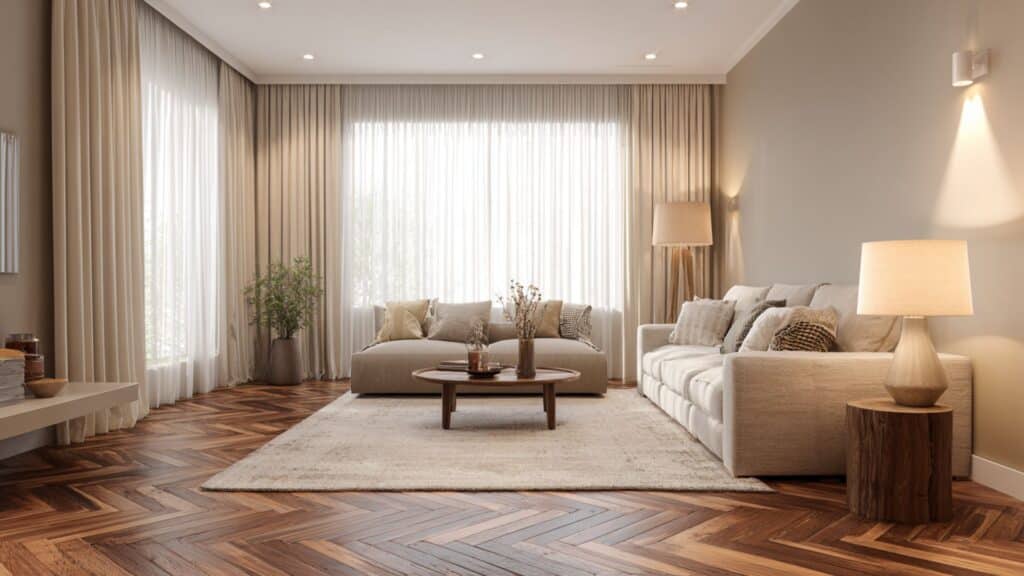
Herringbone floors add a warm, inviting vibe to living rooms with their classic pattern and rich wood tones. They bring depth and charm to open spaces. Consider these ideas for a cozy yet lavish feel:
- Warm wood tones create cozy, graceful atmospheres filled with natural light and soft textures.
- Works beautifully with large area rugs that define seating areas and add comfort.
- Pairs well with plush furniture and soft lighting for relaxed, stylish living spaces.
These approaches bring a graceful style to your living room with careful layering. Herringbone flooring can elevate the whole room’s atmosphere organically and beautifully.
2. Kitchen
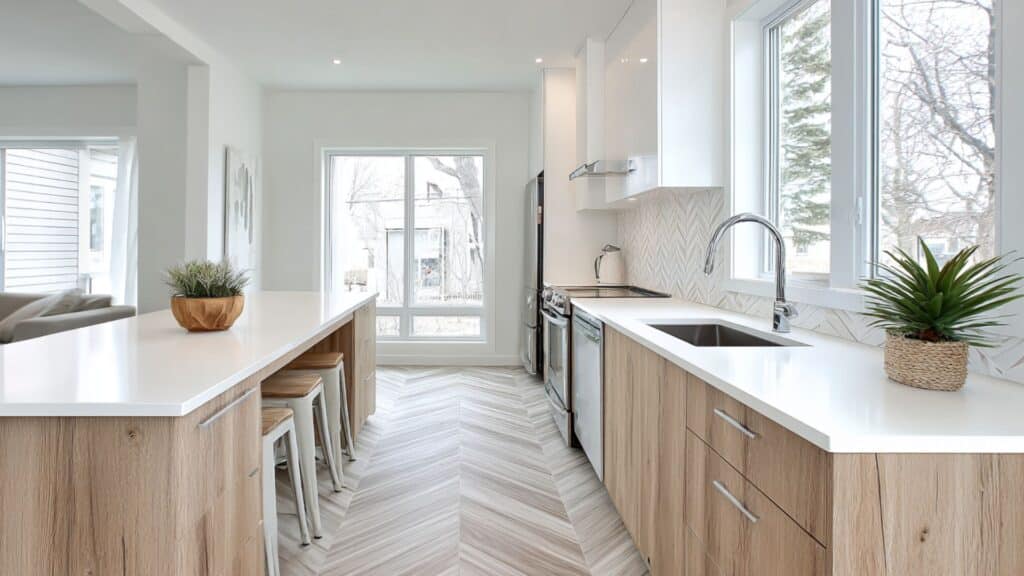
Herringbone floors in kitchens balance beauty with practicality. The pattern adds visual interest while durable materials stand up to spills. Consider these tips for a durable, stylish kitchen:
- Use waterproof vinyl or tile herringbone designs that resist moisture and wear.
- Combine with simple cabinetry to create a balanced, uncluttered look that pops.
- Opt for light shades to brighten and open up smaller kitchen spaces.
These choices keep your kitchen floors looking great and easy to clean. They help make kitchens feel fresh and inviting while lasting long.
3. Hallways and Entryways
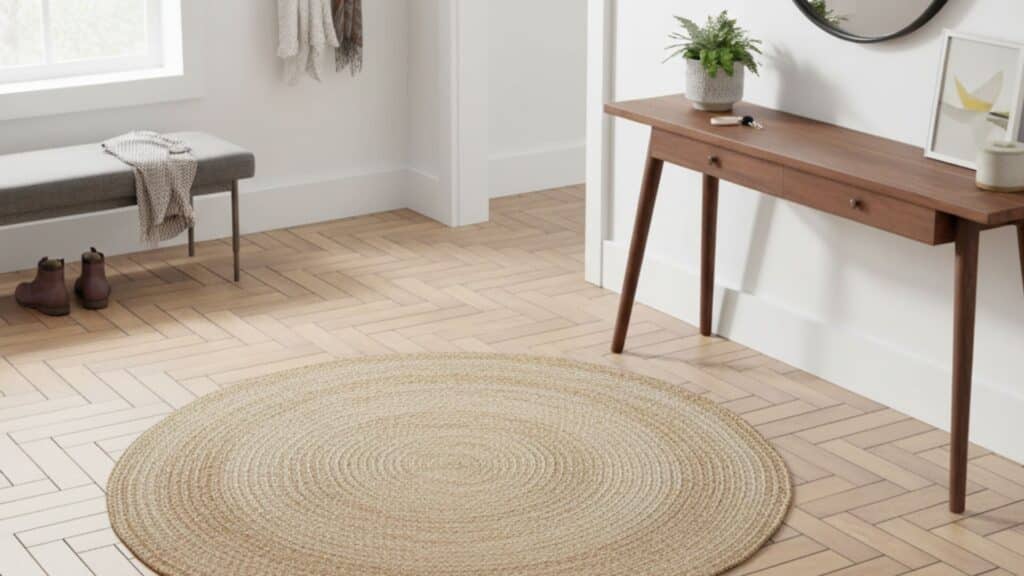
The right herringbone pattern in hallways and entryways can change tight spaces. It helps elongate and widen narrow paths, boosting curb appeal indoors. Try these ideas to enhance flow and space:
- Diagonal or chevron layouts create eye-catching lines that trick the eye into wider spaces.
- Use contrasting colors or grout to highlight the pattern and add drama.
- Add complementary baseboards or trims for clean, finished edges that frame the pattern.
These patterns make hallways feel larger and more welcoming overall. Herringbone floors in entryways set a stylish first impression.
4. Bedrooms
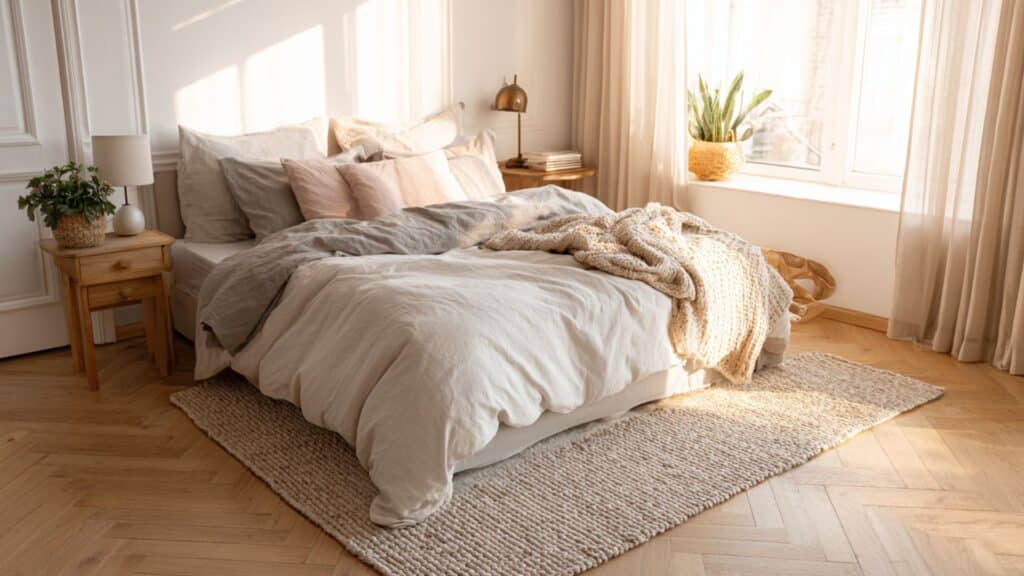
A herringbone floor can calm and comfort bedrooms with soft colors and finishes. It adds interest without overwhelming peaceful spaces. These tips help create relaxing retreats:
- Softer stains and matte finishes produce calm, inviting bedroom floors with muted glam.
- Pair with textured area rugs for warmth and to gently break up patterns.
- Choose muted or pastel hues to keep bedrooms restful and cozy.
These ideas ensure bedrooms feel balanced and serene with stylish flooring. Herringbone adds character while supporting a peaceful, cozy atmosphere.
Pros and Cons of Herringbone Flooring
Every flooring choice comes with advantages and drawbacks you should weigh before making a decision. Understanding both sides helps you decide if herringbone flooring is the right fit for your home.
| Pros | Cons |
|---|---|
| Classy appeal that never goes out of style | Requires precise installation and careful measurements |
| Adds visual space and makes rooms feel larger | Slightly costlier than straight plank layouts |
| Increases home value and resale appeal | May require professional installation for best results |
Consider your budget, skill level, and timeline when deciding if herringbone flooring works for your project. The unexpected results often justify the extra effort and cost for homeowners who value distinctive, high-end flooring.
Maintaining Your Herringbone Floors
Keeping your herringbone floors looking beautiful requires simple routine care and attention to potential damage sources. Following basic maintenance practices extends your floor’s lifespan and preserves its attractive appearance for years ahead. Here’s how to care for your herringbone flooring properly:
- Regular vacuuming and dusting remove dirt and debris that can scratch the surface when walked on repeatedly.
- Use furniture pads under all chairs, tables, and heavy items to avoid scratches and dents in the flooring.
- Refinish wood floors every few years to restore their shine and protect them from wear and damage.
- Clean spills quickly with a dry cloth to prevent warping, staining, or moisture damage to your floors.
These simple habits protect your investment and keep your herringbone floors looking fresh and new longer. Consistent care prevents expensive repairs and maintains the beauty that makes herringbone flooring so special in homes.
Final Words
You now understand everything about the herringbone floor pattern and how it can alter your home’s look. This versatile design works in any room and pairs beautifully with different materials and decorating styles throughout.
If you prefer traditional wood or modern vinyl, herringbone adds character that plain floors simply cannot match.
The pattern makes small rooms feel bigger and large rooms feel more interesting without overwhelming your space. Remember that proper installation matters more than rushing through the project to save time or money.
Your home deserves flooring that makes you smile every time you walk through the door. Share your herringbone floor questions or experiences in the comments below!














